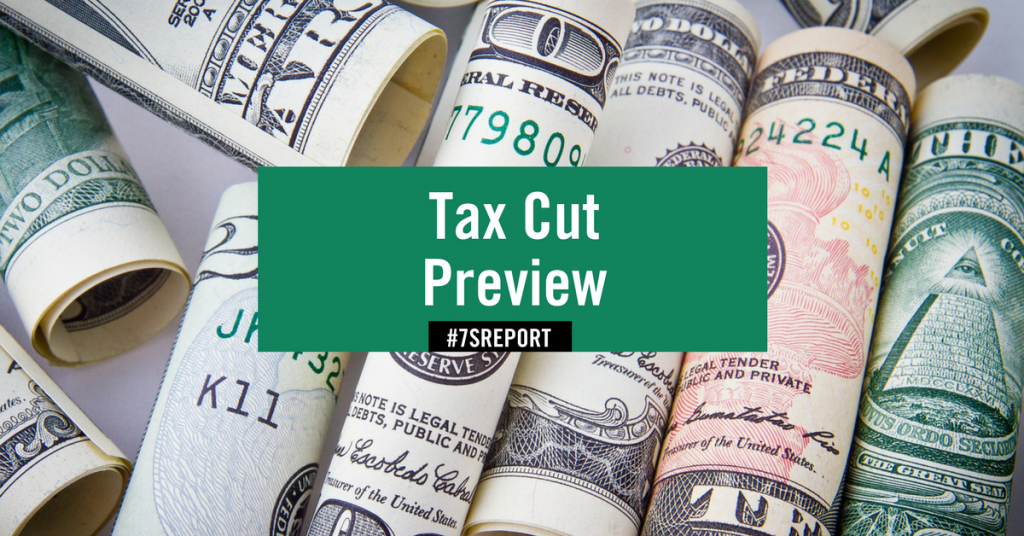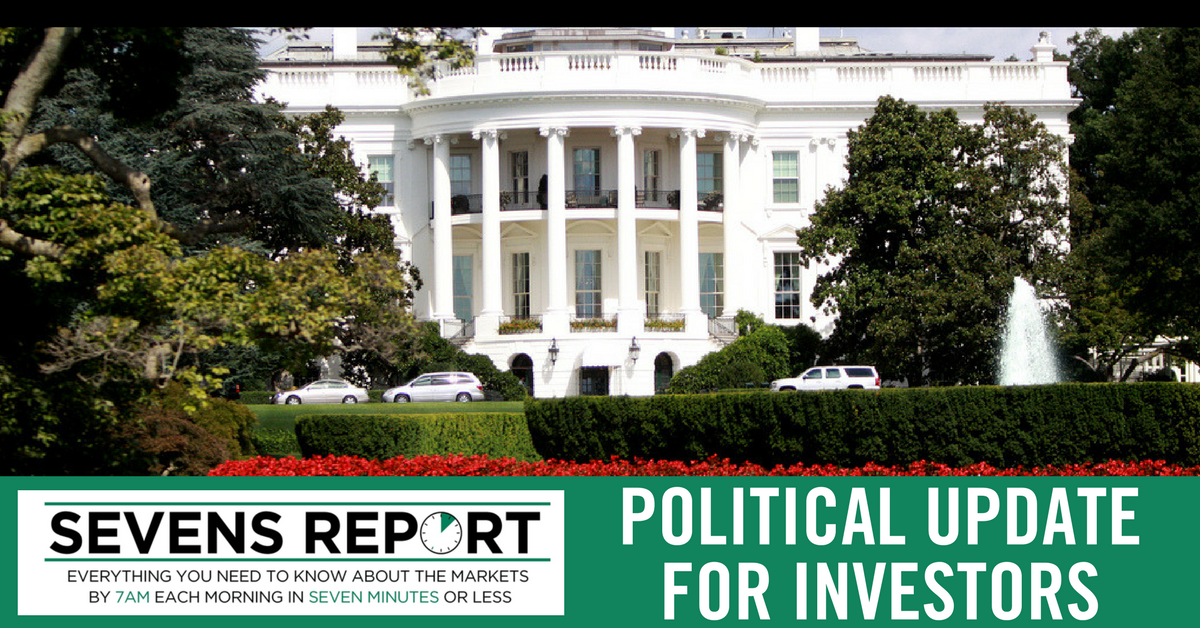Tax Cut Preview, September 27, 2017
The Sevens Report is the daily market cheat sheet our subscribers use to keep up on markets, leading indicators, seize opportunities, avoid risks and get more assets. Get a free two-week trial with no obligation, just tell us where to send it.
Today we should see the next step in the tax cut drama, as Republicans unveil a more detailed tax cut plan. But while some of the headlines around this are sure to seem “pro-growth” and positive, it’s important to realize that almost nothing announced today will actually make it into any legislation (and it doesn’t remove the chances nothing gets done at all).
Still, tax cuts are the most credible and legitimate “bullish” or “bearish” wildcard remaining for the markers in 2017.
From a bullish standpoint, real tax cuts could easily push the S&P 500 up another 4% (to 2610) because that will increase expected 2018 EPS to (conservatively) $145/share.
From a bearish standpoint, while tax cuts aren’t fully priced into stocks, there is the expectation something does get done, especially regarding foreign profit repatriation. If tax cuts, like healthcare, fail, then we’re now sitting with a market at 18X next year’s earnings—and no identifiable future growth catalyst (and a Fed raising rates). That will cause investors to reduce exposure.
Regarding today’s announcement, here’s what’s (generally) expected:
1. Corporate rate cut to 20% from the current 35%.
2. 10% tax on foreign profits (this is the foreign profit repatriation piece).
3. Individual top rates cut to 35% from 39.5%.
4. “Pass through” rate cut to 25% from 39.5%.
Again, little (if any) of this will make into final legislation.
But, it’s the starting point for negotiations to a potential deal.
Bigger picture, the expectations for tax cuts (what makes them bullish of bearish) won’t change regardless of today’s details.
To review, from a corporate rate standpoint…
What’s Expected: Corporate rate cut to around 28%.
Likely market reaction: Mildly positive.
Bullish If: Corporate rate cut below 25%. Likely market reaction: Reflation basket outperforms.
Bearish If: Corporate rate doesn’t change. Likely market reaction: Modest Decline, but not a bearish game changer.
Foreign Profit Repatriation Holiday: Expected to pass.
Likely market reaction: (Withheld for subscribers only—unlock specifics and ETFs by signing up for a free two-week trial).
Wildcard to Watch: I was actually surprised and encouraged to see that a “pass through” rate cut is in this proposal. This is very important to small businesses (like mine). Approximately 95% of American businesses are “pass through” (LLCs, S Corps, etc.) where the business owner is taxed at the individual rate. So, in many ways that makes corporate tax cuts just important for large corporations and shareholders.
A cut to the pass through rate lowers taxes for small business, and that could be a potentially significant (and unexpected) positive for the economy, if any of this actually gets passed into law (and that remains very much in doubt).
Bottom line, don’t let positive (or negative) headlines fool you today. The tax cut fight has only just begun, but how it works out will have potentially significant consequences for the economy. We will remain on top of it for you throughout the process.
Cut through the noise and understand what’s truly driving markets, as this new political and economic reality evolves. The Sevens Report is the daily market cheat sheet our subscribers use to keep up on markets, seize opportunities, avoid risks and get more assets. Sign up for your free two-week trial today and see the difference 7 minutes can make.


